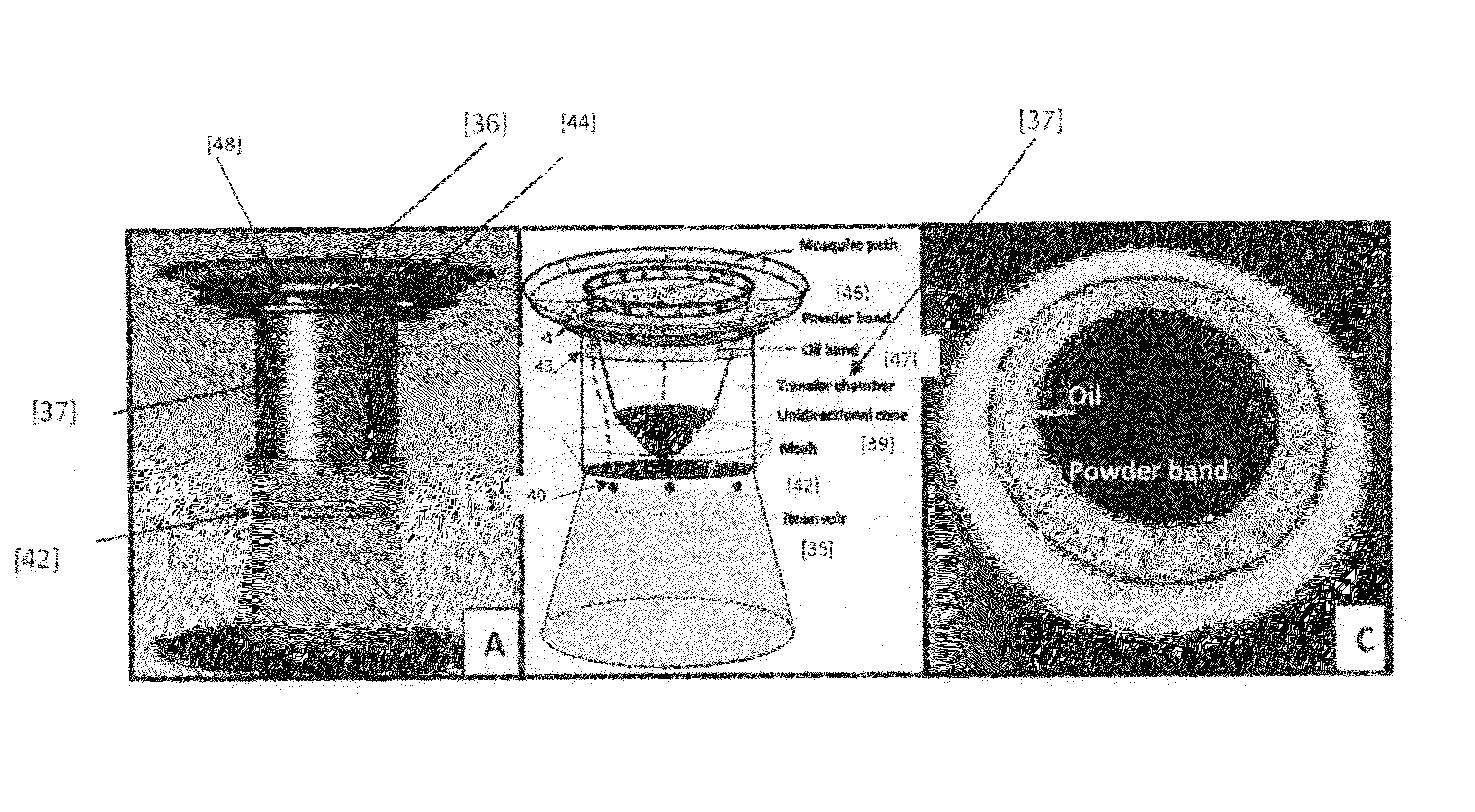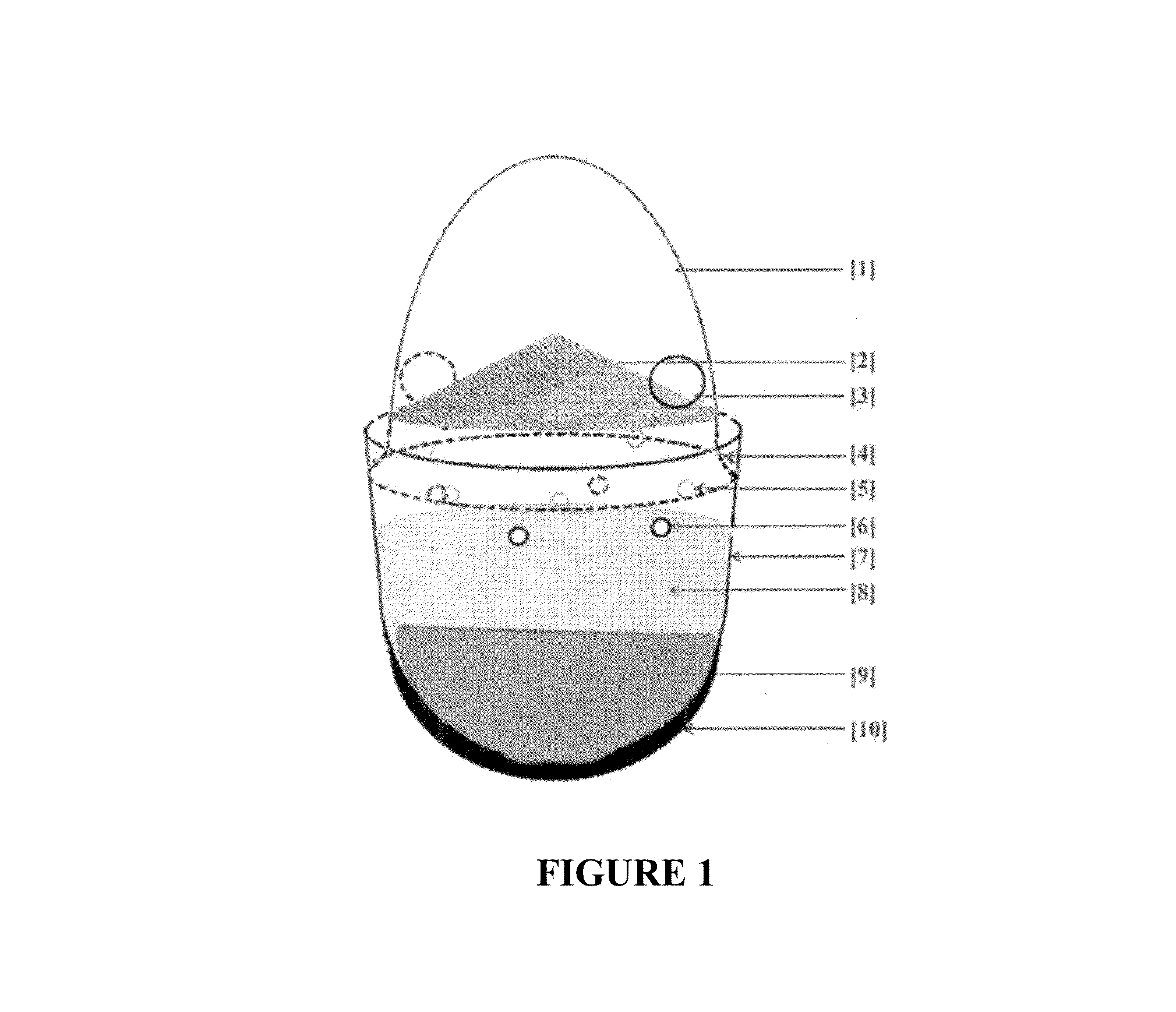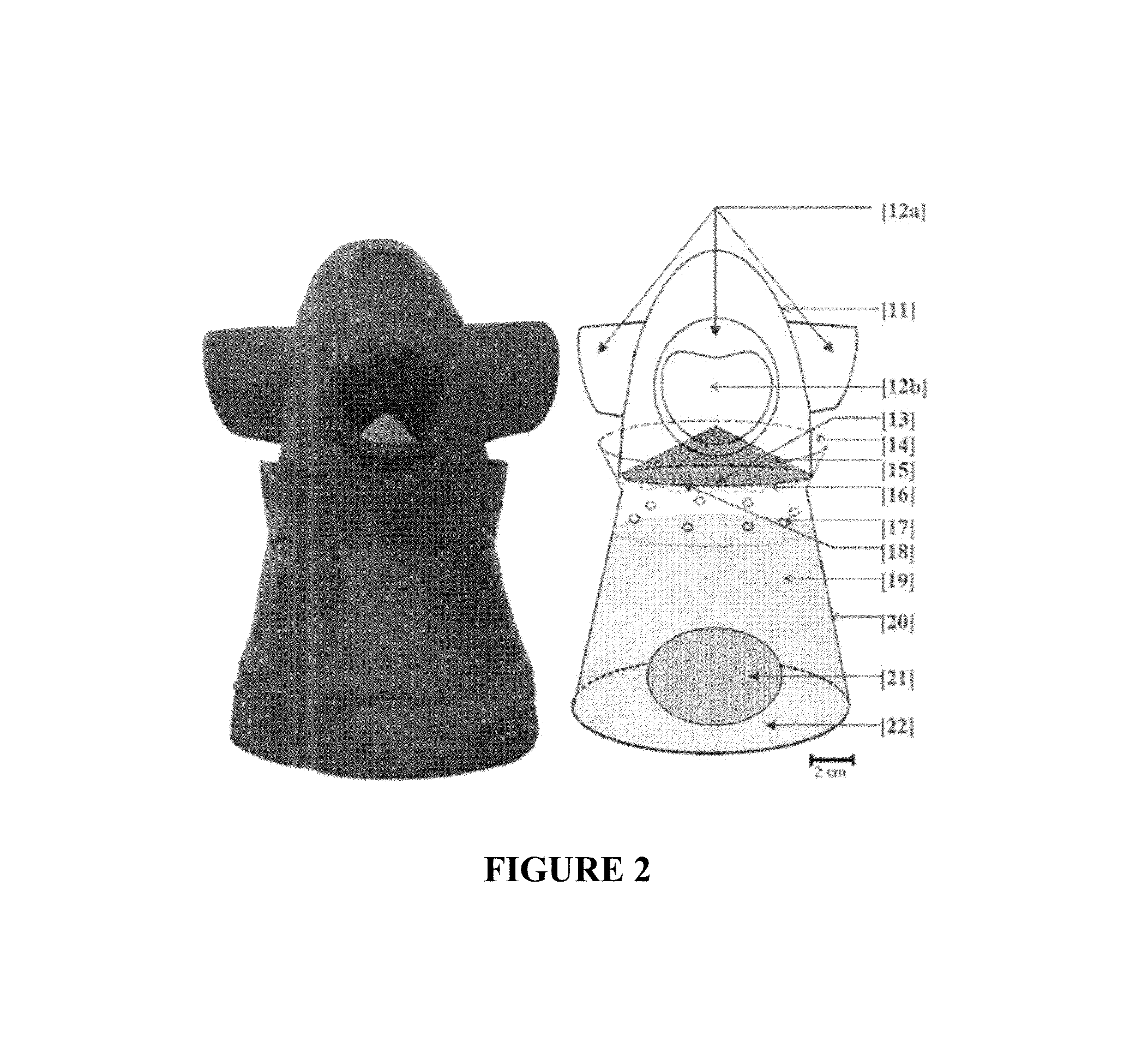Autodissemination of an insect-growth regulator for insect management
a growth regulator and insect technology, applied in the field of insect vectors, can solve the problems of difficult control of mosquitoes, unavoidable human contact with insects, and prime public and veterinary health threats of mosquitoes, so as to increase the persistence of active ingredients, enhance the effect of contamination, and enhance the load of active ingredients
- Summary
- Abstract
- Description
- Claims
- Application Information
AI Technical Summary
Benefits of technology
Problems solved by technology
Method used
Image
Examples
example 1
Autodissemination of an Insect-Growth Regulator for Insect Management Apparatus—Exemplary Design 1
[0224]An autodissemination of an insect-growth regulator for insect management apparatus was constructed. Referring to FIG. 1, the apparatus includes a conical-shaped cap component [1] which encloses a cotton fabric mesh component [2]. This mesh component is coated with pyriproxyfen, or other suitable insect-growth regulator. The cap component further contains (i) a plurality of entrances [3], which allow entry by mosquitoes into the cap component at points above the mesh component, and (ii) a plurality of auto-filling holes [5] that are at points below the mesh component. The cap component is mated to a cup component [7]. As the cap component has a slightly smaller diameter than the cup component, when the two components are mated, a trough [4] is formed between the cap component and the cup component. This trough allows for collection of rainwater that then can enter the cup component...
example 2
Autodissemination Apparatus—Exemplary Design 2
[0225]A prototype autodissemination station to topically contaminate oviposition-seeking mosquitoes was developed consisting of two main sections: a bottom water reservoir and an upper transfer chamber. FIG. 2 shows an image and schematic drawing for a prototype autodessemination station. The sections were constructed by molding wet shredded cardboard with corn starch as a binder, a technology commonly used in the manufacture of disposable plant containers. Peat moss, egg cartons, rice hulls, newspaper, straw, natural polymers, and other materials and binders can also be used.
[0226]The reservoir component [20] is flask-shaped to maximize water-holding capacity (e.g. 600 ml). The reservoir's role is to present a lure (water) to attract gravid females. The reservoir also holds an organic food substrate (e.g., dried shredded oak leaves, yeast, rabbit pellets, etc.) for bacteria that produce volatile cues females use in oviposition sites sel...
example 3
Autodissemination Apparatus
Exemplary Design 3—Windows Autodissemination Station
[0232]A windows autodissemination station (WADS) design consists of two major components: a reservoir and a transfer chamber. FIG. 3 shows a schematic of the WADS design. The lower reservoir chamber [33] is identical to designs 1 and 2. The upper transfer chamber [28] features a unidirectional mesh funnel and two pyriproxyfen-coated window shields [25] made of translucent plastic material covering two vertical window slits [24]. The unidirectional funnel allows the female mosquitoes seeking water for egg laying to enter the chamber through a horizontal entrance on top of the transfer chamber, but prevented from exiting back through the top entrance and / or reaching the water-filled reservoir chamber [33] on the bottom. The WADS design forces the mosquitoes unable to reach the water to try to escape via the vertical window openings due to their attraction of light. Exiting mosquitoes are thereby forced to w...
PUM
| Property | Measurement | Unit |
|---|---|---|
| viscosity | aaaaa | aaaaa |
| viscosity | aaaaa | aaaaa |
| viscosity | aaaaa | aaaaa |
Abstract
Description
Claims
Application Information
 Login to View More
Login to View More - R&D
- Intellectual Property
- Life Sciences
- Materials
- Tech Scout
- Unparalleled Data Quality
- Higher Quality Content
- 60% Fewer Hallucinations
Browse by: Latest US Patents, China's latest patents, Technical Efficacy Thesaurus, Application Domain, Technology Topic, Popular Technical Reports.
© 2025 PatSnap. All rights reserved.Legal|Privacy policy|Modern Slavery Act Transparency Statement|Sitemap|About US| Contact US: help@patsnap.com



